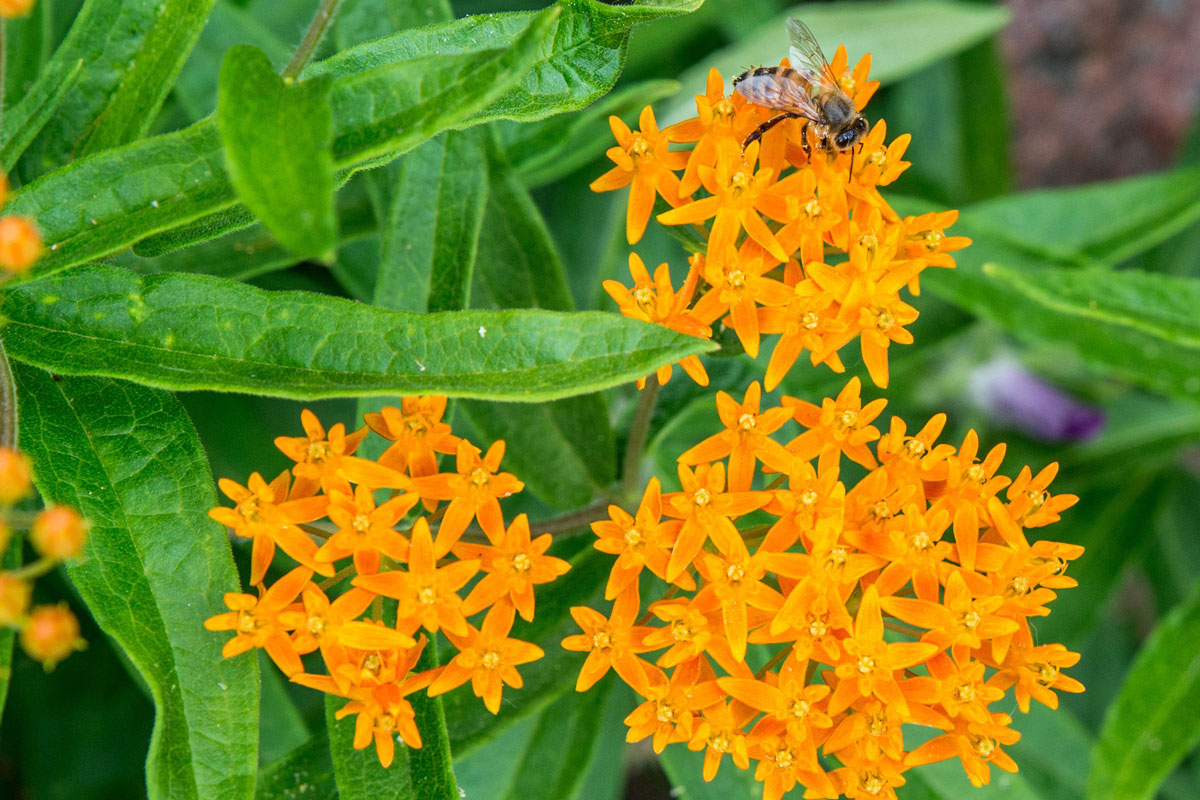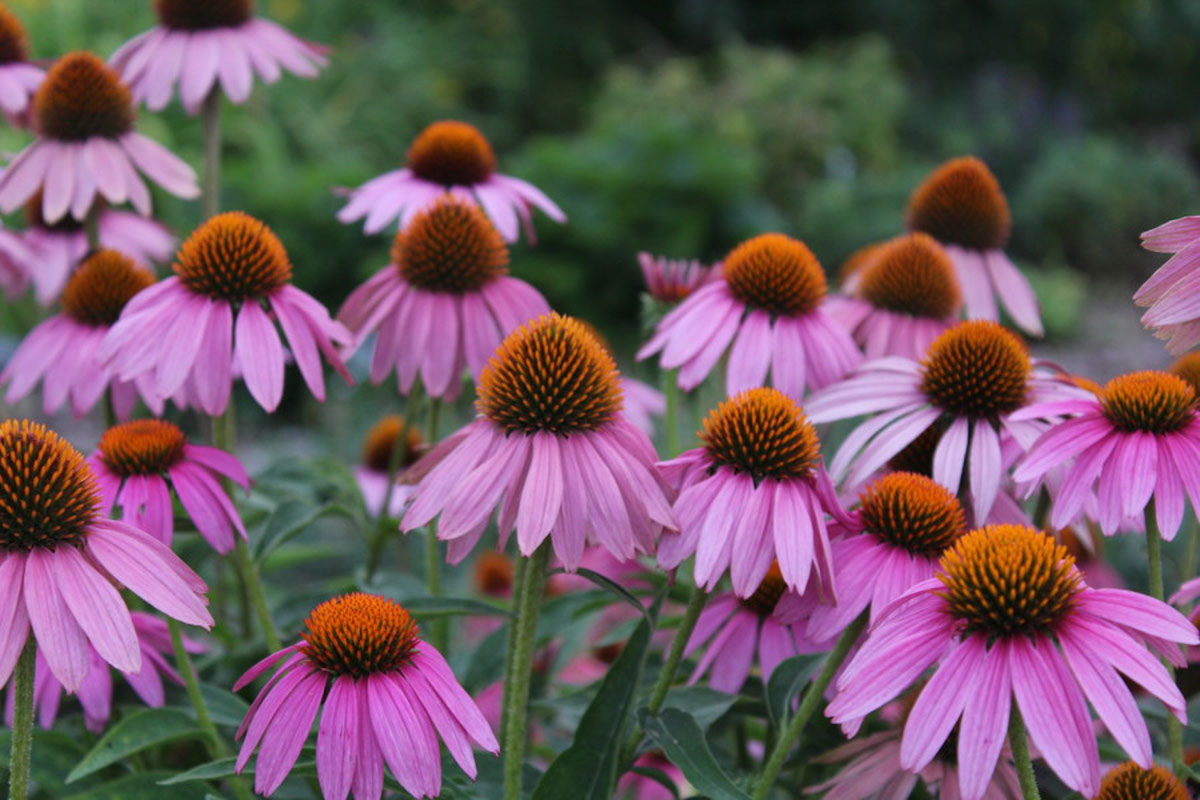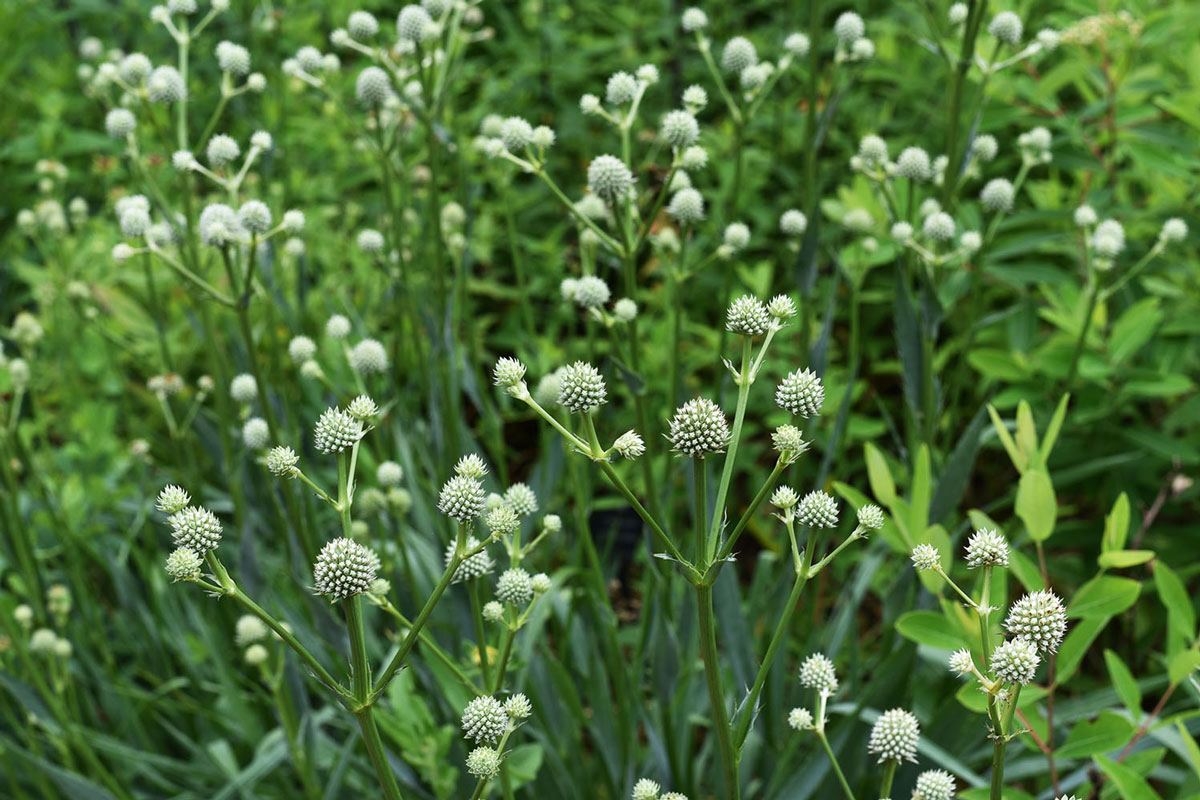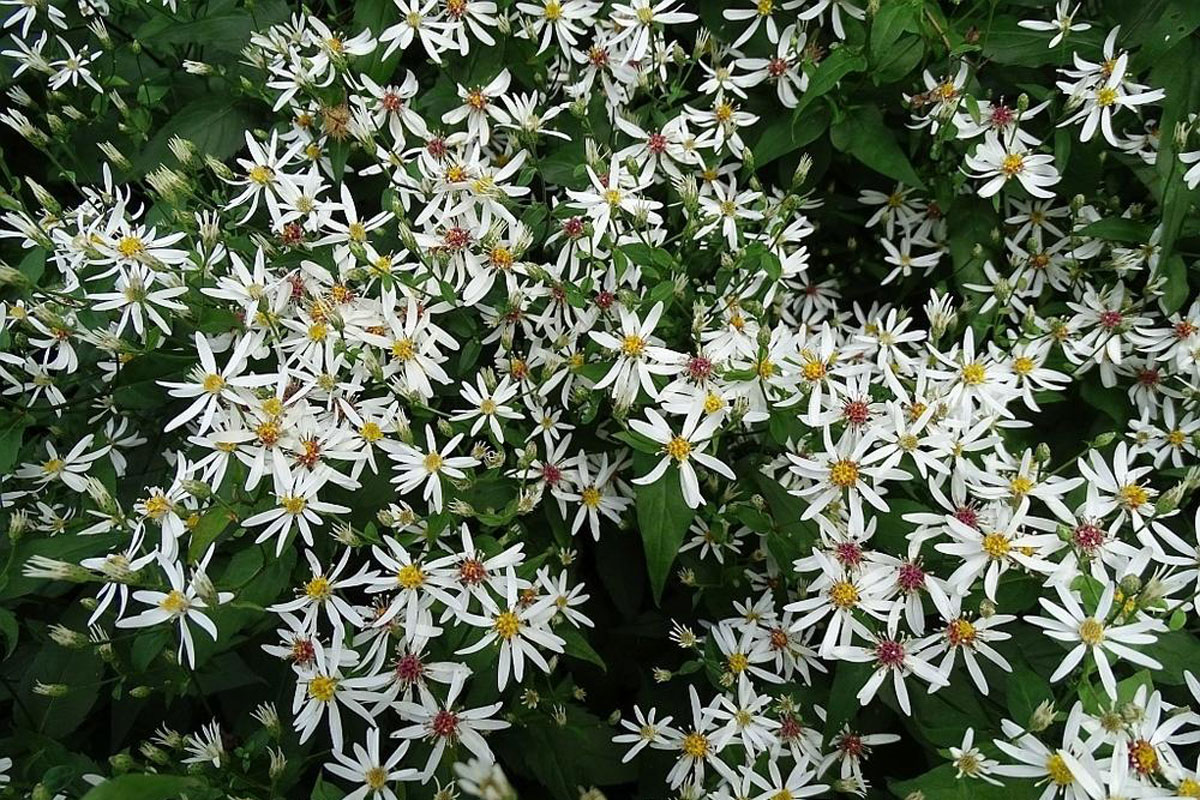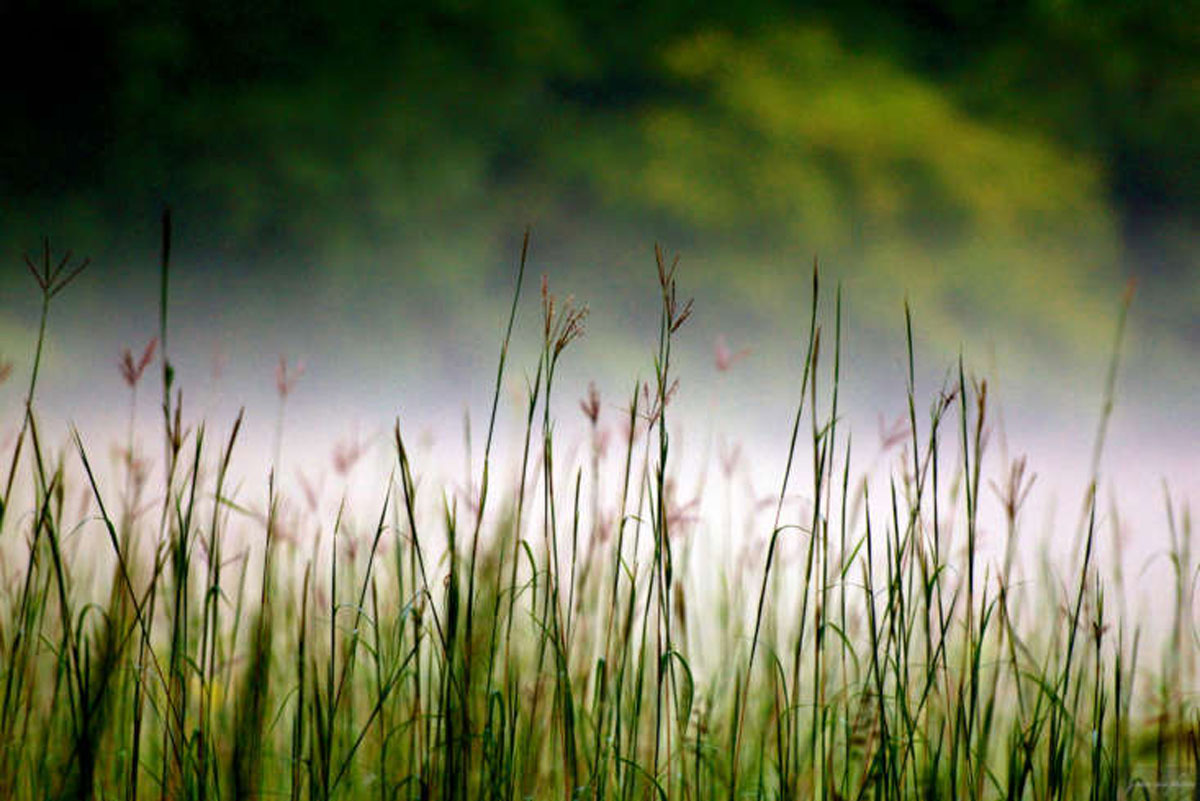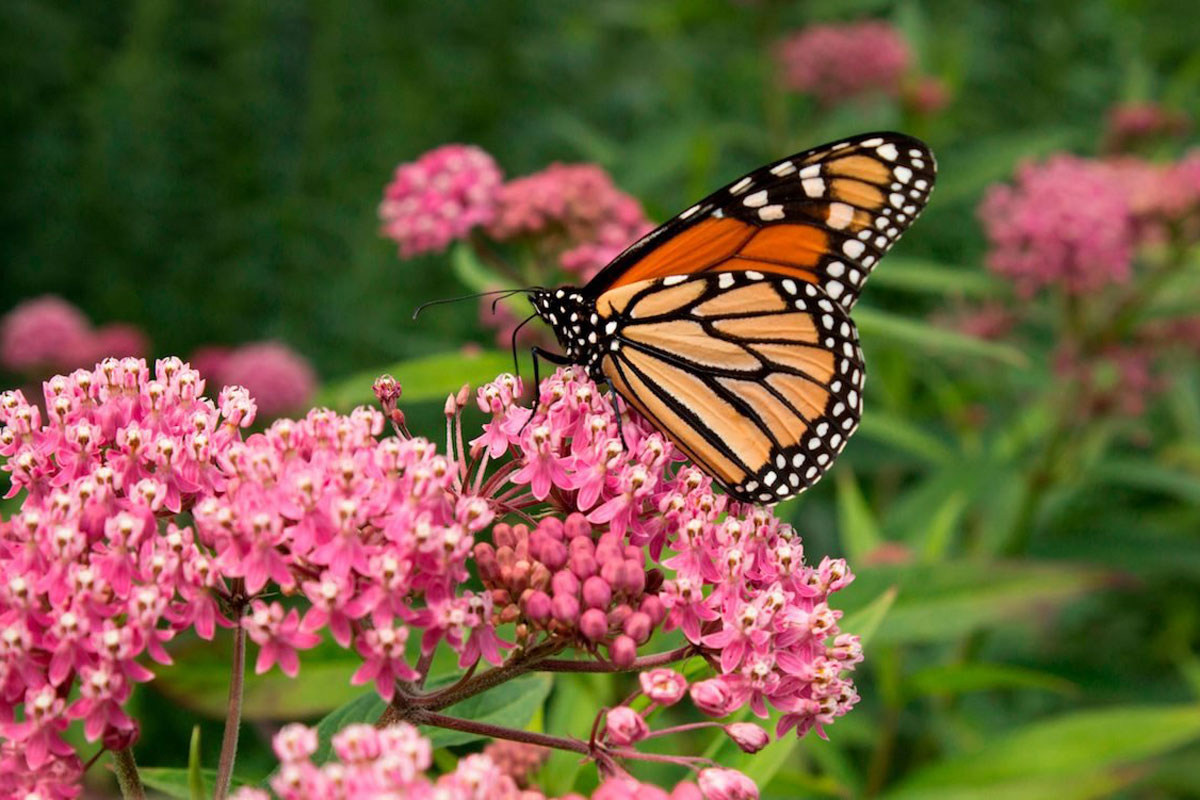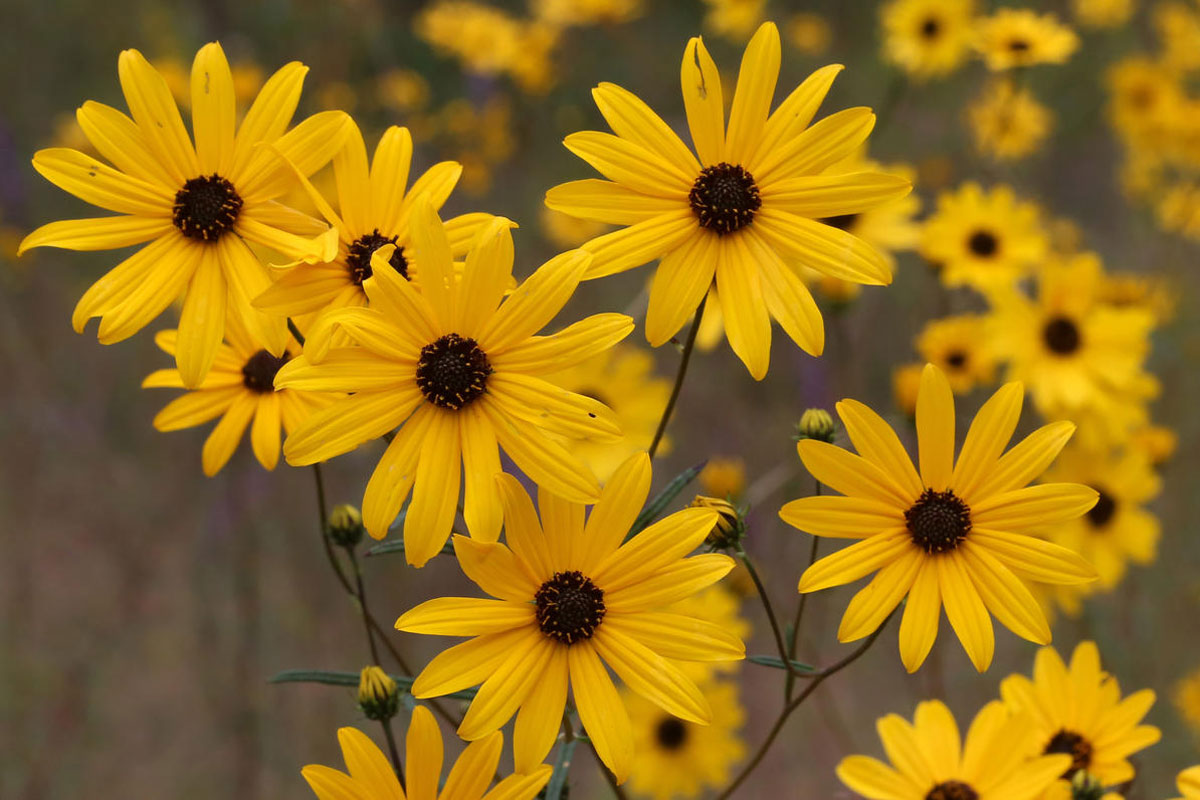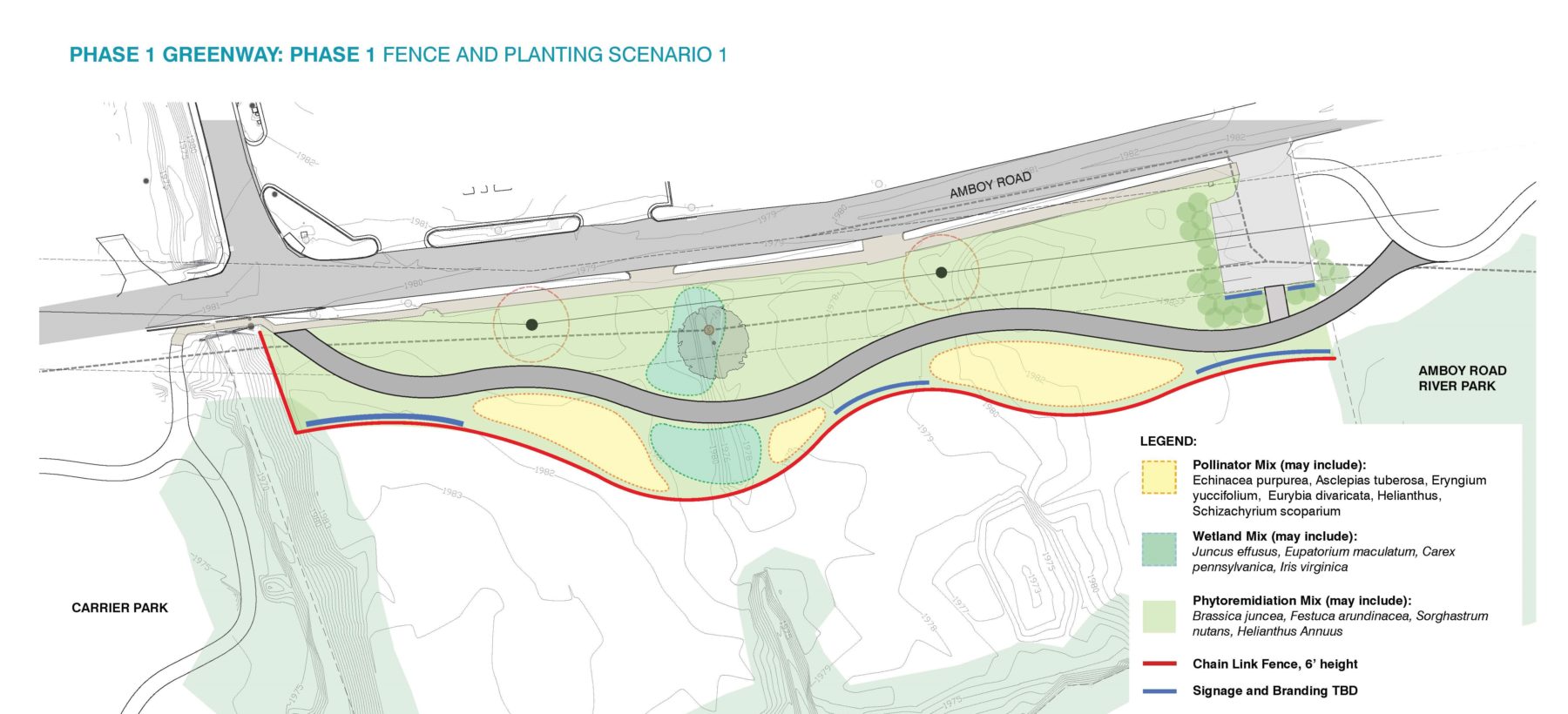
RiverLink is working with a variety of partners to initiate the first phase of Karen Cragnolin Park, which includes the paved greenway and accompanying landscaped corridor. This phase will transport visitors through carefully-selected plantings focused on pollinator habitat, floodwater storage and continued phytoremediation of the soil. The greenway will be accompanied by educational, cultural and historical signage for people to experience as they move through the park. Learn more about the plantings themselves below.
Karen Cragnolin Park’s master plan and design documents, developed by professional landscape architects, recreation planners, and environmental engineers, call for native prairie grasses and forbs chosen for their ability to support pollinating insects, store and filter floodwater, and continue phytoremediation to heal the soil. Specifically, our design for pollinator gardens, situated among open native meadows, facilitates an opportunity for visitors to learn about native grassland ecology, and observe the diversity of life it supports, while continuing the remediation of soils from the site’s past industrial use.
Our planned mix of plants to support pollinators includes: Common milkweed (Asclepias syriaca), Butterfly weed (Asclepias tuberosa), Purple coneflower (Echinacea purpurea), Rattlesnake master (Eryngium yuccifolium), White wood aster (Eurybia divaricata), Swamp sunflower (Helianthus angustifolius) and Little bluestem (Schizachyrium scoparium).
These native species have been chosen based on their regional and localized importance to providing habitat for pollinating insects, many of which are included on the Xerces Society’s list of encouraged pollinator plants for the southeastern U.S. Feel free to use this resource to help plan your own home gardens!
In addition to pollinators, our plans call for a wetland mix suitable for growth in low-lying wet areas likely to experience frequent flooding, which includes: Soft rush (Juncus effusus), Spotted joe-pye weed (Eupatorium maculatum), Pennsylvania sedge (Carex pennsylvania) and Virginia iris (Iris virginica).
A phytoremediation mix will also be included to help facilitate continued soil remediation: Mustard greens (Brassica juncea), Tall fescue (Fetusca arundinacea), Indiangrass (Sorghastrum nutans) and Common sunflower (Helianthus annuus).
This project represents a key opportunity to sustain declining pollinators, as much of the municipal parkland contiguous to the future Karen Cragnolin Park is mowed fescue, with some clover present, but largely devoid of pollinator habitat. The master plan for Karen Cragnolin Park creates almost half an acre of much-needed habitat for pollinators, including butterflies, hummingbirds, bees, and other species whose native habitats are rapidly declining in the face of rampant development throughout the French Broad River watershed.

